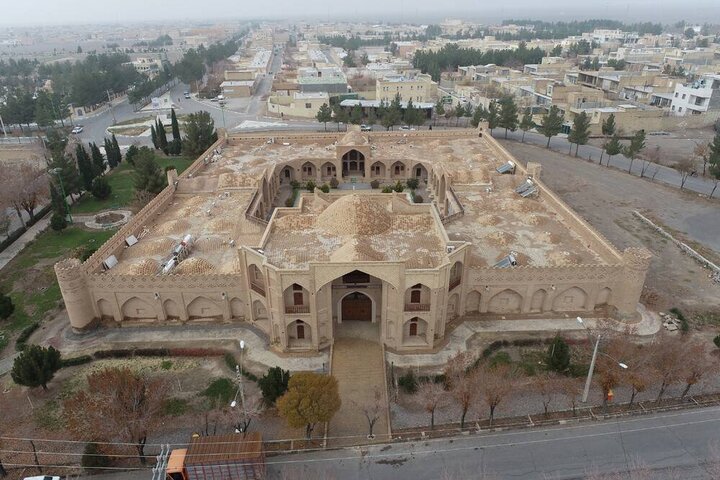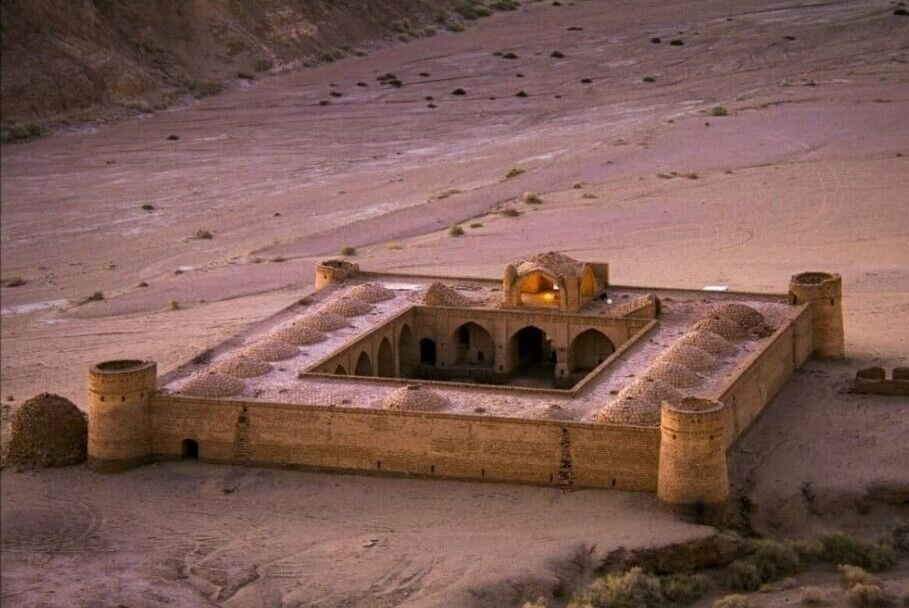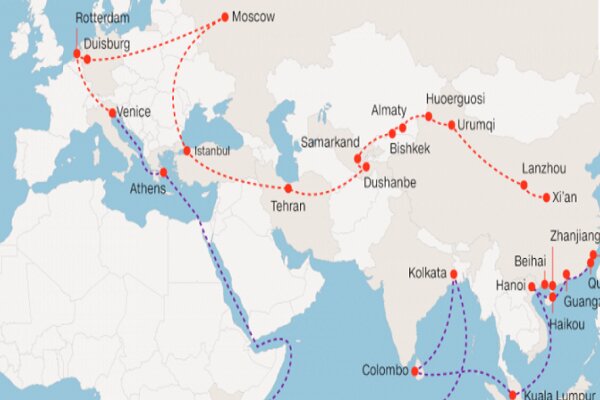
The UNESCO World Heritage Committee has added Iran’s historical caravanserais to its World Heritage List at the 45th session of the United Nations’ cultural organization in Riyadh, Saudi Arabia.
UNESCO has selected 54 historical caravanserais located in 24 provinces across Iran and inscribed them on its world heritage list.
With the decision, the Iranian caravanserais, carefully selected from among hundreds, officially became the country’s 27th tangible cultural heritage item to be globally registered.
A caravansary, also known as a caravanserai, is a type of inn or rest stop for travelers, particularly those who were journeying along trade routes in the Middle East or Asia.
The establishments were typically found along major caravan routes and were designed to provide shelter, food, and water for both people and animals.
Caravansaries were often built by wealthy merchants or rulers as a way to facilitate trade and commerce, as well as to ensure the safety and well-being of travelers passing through their lands.
Many caravansaries also had shops or marketplaces where merchants could sell their goods to travelers, further enhancing their role as centers of trade and commerce.
The routes and the locations of the caravanserais were determined by the presence of water, geographical conditions, and security concerns.
The fifty-four caravanserais of the property are only a small percentage of the numerous caravanserais built along the ancient roads of Iran.

They are considered to be the most influential and valuable examples of the caravanserais of Iran, revealing a wide range of architectural styles, adaptations to climatic conditions, and construction materials, spread across thousands of kilometers and built over many centuries. Together, they showcase the evolution and network of caravanserais in Iran, in different historical stages.
The term caravanserai comes from two words “caravan” which means travelers who travel in a group and “sera” which means house or place of residence. Hence, caravanserai means (House for a group of travelers).
The Caravanserais are one of the most important forms of Persian Architecture that emerged and created cause of routes development and needs relating to the travel demands and requirements.
The history of Iranian caravanserais goes back to the pre-Islam era, especially the Achaemenid era (more than 2500 years ago). At that time, caravanserais were located at a distance of one day’s journey from each other.
Many caravanserais such as “Darvazeh Gach Caravanserai”, “Kanar Siah”, “Dir Gachin” and “Robat Anoushirvani” were built in Iran during the Sassanid era.
“Robat Mahi” 66 km east of Mashhad, “Robat Sharaf” a palace-like mansion on the road from Mashhad to Sarkhas, and “Robat Karim” on Shahryar road are among the most beautiful caravanserais of the Ghaznavid period.
The Safavid era is considered the golden age of caravanserai construction; Because during this period, maritime and overland trade was very prosperous and Shah Abbas I decided to rebuild and revive the Silk Road, which is considered the largest and most important trade route in the world.
Iranian caravanserais were usually constructed in a square or rectangular outline, although there are very few circular caravanserais in the country. The entrance of a caravanserai is very big and high so that it can be seen from far away by the passengers.
Around the courtyard, there are arches on a platform, which are actually small rooms where travelers used to rest. In some cases, there were small rooms under the passenger room where passengers’ belongings were kept.
Stone, brick, clay, and traditional mortars are the main materials used to build caravanserais being decorated with tiling and brickwork.

Here are comments of two international travelers to the restored Zein-o-din caravanserai in Yazd province, central Iran:
“A great way to experience Iran,” Paula G. from London posted to TripAdvisor in April.
“There are nearly a thousand of these caravanserai dotted all over Iran, some in disastrous states of disrepair some like Zein-o-din restored to the glory days when camel trains spotted here on the return from the Orient laden down with silk and spices. Sleeping arrangements are basic but the food is hearty & tea never-ending. One can wander in the desert before locking up time (but beware, the local wildlife is speedy) & then watch the sun descend below the mountains from the rooftop as the sky comes alive with stars. Alternatively, should the night prove too chill the central courtyard may be the place for entertainment until the eyelids become too heavy,” she wrote.
Another visitor to the caravanserai says, “We came across Zein-o-din Caravansary on our road trip. It has been a haven for wear travelers including us for hundreds of years. We had chai (tea) and great exploration of the building, and the needed bathroom break. We even took a peek at the different rooms. The bathroom is very clean and well-supplied. I will definitely consider staying there on my next trip to Iran.”
Nowadays, the use of some Iranian caravanserais has also changed and today they are converted into restaurants, traditional hotels, and accommodation facilities for tourists.
Accommodating one of these ancient caravanserais can be an amazing experience. Spending a few nights in these old inns is like traveling in time.
Reported by Tohid Mahmoudpour




